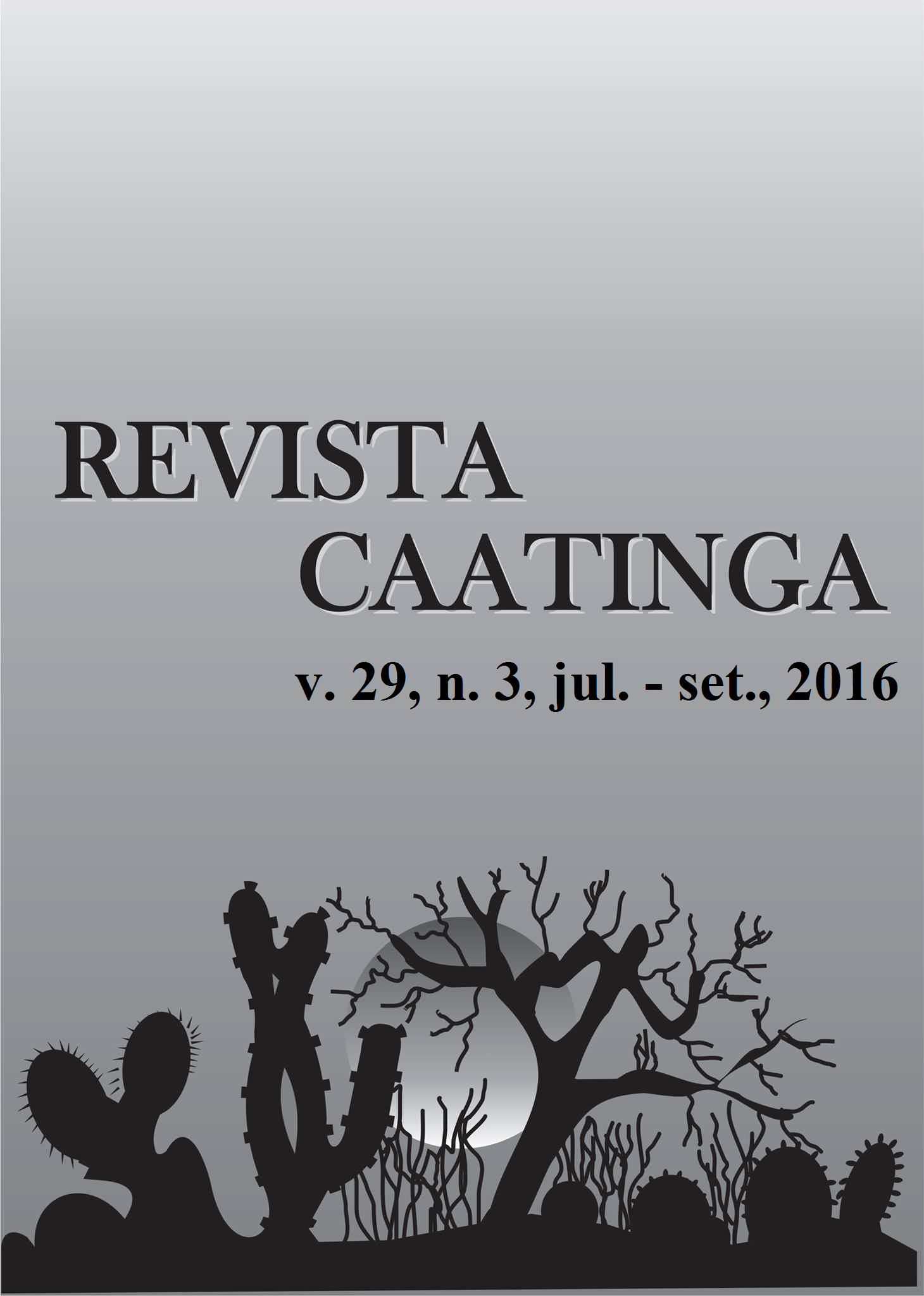TENACITY AND PERSISTENCE OF COPPER FUNGICIDES IN CITRUS SEEDLINGS UNDER SIMULATED RAINFALL
DOI:
https://doi.org/10.1590/1983-21252016v29n318rcKeywords:
Chemical control. Copper retention. Surface tension.Abstract
The amount of fungicide that adheres to the leaf during spraying and the amount that remain on the leaf after weathering are the main factors that defines the amount of active residue on the leaf surface to effectively control plant pathogens. Thus, the objective of this work was to evaluate the tenacity and persistence of copper in citrus seedling leaves under simulated rainfall in Jaboticabal, State of São Paulo, Brazil. The evaluated variables were copper content, solution retention, surface tension and drop spectrum. A significant and inversely proportional linear relationship to drops <100 µm was found. The percentage of copper retained in leaves of citrus seedlings with copper fungicides of suspension concentrate (SC) formulations after simulated rainfall was greater than 80%. Copper fungicides of SC formulations presented the lowest surface tension, allowing greater tenacity and persistence of copper on seedlings of citrus leaves after simulated rainfall and increased contact between the drops and leaf surface.Downloads
References
ASAE - AMERICAN SOCIETY OF AGRICULTURAL ENGINEERING. Spray nozzle classification by droplet spectra. St. Joseph: 2000. p. 389-391.
CABRAS, P. et al. The effect of simulated rain on folpet and mancozeb residues on grapes and on vine leaves. Journal of environmental Science and Health, New York, v. 36, n. 5, p. 609-618, 2001.
CAMARA, F. T. et al. Distribuição volumétrica e espectro de gotas de bicos hidráulicos de jato plano de faixa expandida XR11003. Engenharia Agrícola, Jaboticabal, v. 28, n. 4, p. 740-749, 2008.
CANTERI, M. G. et al. SASM-AGRI – Sistema para análise e separação de médias em experimentos agrícolas pelos métodos Scott- Knott, Tukey e Duncan. Revista Brasileira de Agrocomputação, Ponta Grossa, v. 1, n. 2, p. 18-24, 2001.
CUNHA, J. P. A. R. et al. Avaliação de estratégias para redução da deriva de agrotóxicos em pulverizações hidráulicas. Planta Daninha, Viçosa, v. 21, n. 2, p. 325-332, 2003.
CUNHA, J. P. A. R.; BUENO, M. R.; FERREIRA, M. C. Diâmetro de gotas de pontas de pulverização com adjuvantes de uso agrícola. Planta Daninha, Viçosa, v. 28, Sup., p. 1153-1158, 2010.
DECARO JUNIOR, S. T. Avaliação de um pulverizador de volume ultra baixo na cultura do café para o controle de Leucoptera coffeella (lepidoptera: lyonetiidae). 2013. 102 f. Dissertação (Mestrado em Produção Vegetal) – Departamento de fitossanidade, Universidade Estadual Paulista, Jaboticabal, 2013.
ETHERIDGE, R. E.; WOMAC, A. R.; MUELLER, T. C. Characterization of the spray droplet spectra and patterns of fourventuri-type drift reduction nozzles. Weed Technology, Lawrence, v. 13, n. 4, p. 765-70, 1999.
FERREIRA, M. C. et al. Fatores qualitativos para a ponta hidráulica de jato plano ADGA 110015 na pulverização agrícola. Engenharia Agrícola, Jaboticabal, v. 27, n. 2, p.115-120, 2007.
HARDY, S.; FALLOW, K.; BARKLEY, P. Using Cooper sprays to control diseases in citrus. Sidney, NSW: PRIMEFACTS, 2007. 5 p.
HOCK, W. K. Horticultural spray adjuvants. Harrisburg, PA: UPENN, 2004. 4 p. (Agrichemical fact Sheet, 11).
HUNSCHE, M. et al. Mancozeb wash-off from apple seedlings by simulated rainfall as affected by drying time of fungicide deposit and rain characteristics. Crop Protection, Bonn, v. 26, n. 5, p. 768-774, 2007.
MATTHEWS, G. A. Pesticide application methods. 3. Ed. Oxford: Blackwell Science, 2000. 432 p.
MOTA, A. A. B. Quantificação do ar incluído e espectro de gotas de pontas de pulverização em aplicações com adjuvantes. 2011. 74 f. Dissertação (Mestrado em Agronomia/Energia na Agricultura) – Faculdade de Ciências Agronômicas, Universidade Estadual Paulista, Botucatu, 2011.
RICH, S. Dynamics of deposition and tenacity of fungicides. Phytopathology, Saint Paul, v. 44, n. 1, p. 203-213. 1954.
SUHERI, L.; LATIN, C. Retention of fungicides for control of Alter aria leaf blight of muskmelon under greenhouse conditions. Plant Disease, West Lafayette, v. 75, p. 1013-1015, 1991.
TU, M.; RANDALL, J. M. Adjuvants. In: TU, M. et al. Weed control methods handbook the nature conservancy. Davis: TNC, 2003. p. 1-24.
WEBER, A. L. et al. Influence of different materials on coverage and adhesiveness of sprays and their effect on residue removal from apples. New Jersey Agricultural Experimental Station Bulletin, New Jersey, v. 2, n. 1, p. 1-16. 1937.
Downloads
Published
Issue
Section
License
Os Autores que publicam na Revista Caatinga concordam com os seguintes termos:
a) Os Autores mantêm os direitos autorais e concedem à revista o direito de primeira publicação, com o trabalho simultaneamente licenciado sob a Licença Creative Commons do tipo atribuição CC-BY, para todo o conteúdo do periódico, exceto onde estiver identificado, que permite o compartilhamento do trabalho com reconhecimento da autoria e publicação inicial nesta revista, sem fins comerciais.
b) Os Autores têm autorização para distribuição não-exclusiva da versão do trabalho publicada nesta revista (ex.: publicar em repositório institucional ou como capítulo de livro), com reconhecimento de autoria e publicação inicial nesta revista.
c) Os Autores têm permissão e são estimulados a publicar e distribuir seu trabalho online (ex.: em repositórios institucionais ou na sua página pessoal) a qualquer ponto antes ou durante o processo editorial, já que isso pode gerar alterações produtivas, bem como aumentar o impacto e a citação do trabalho publicado (Veja O Efeito do Acesso Livre).







